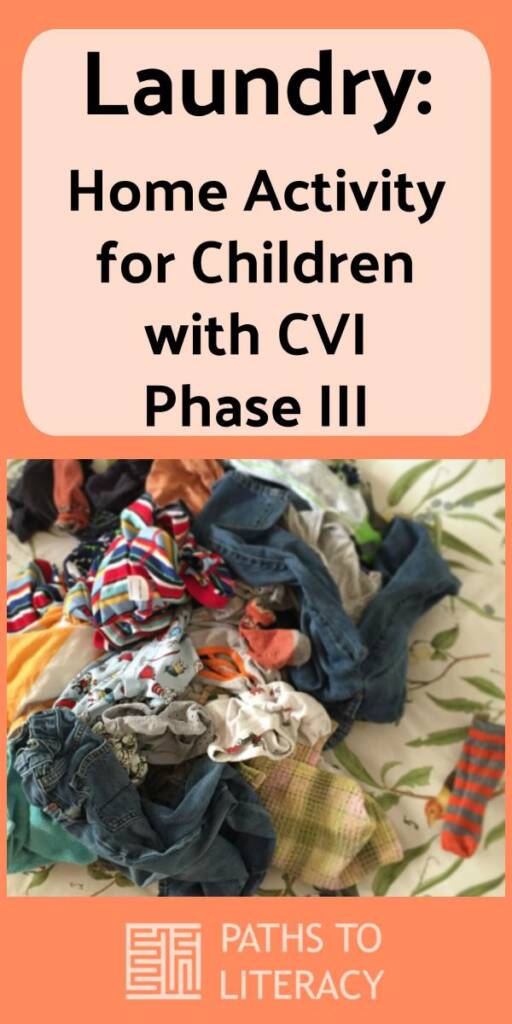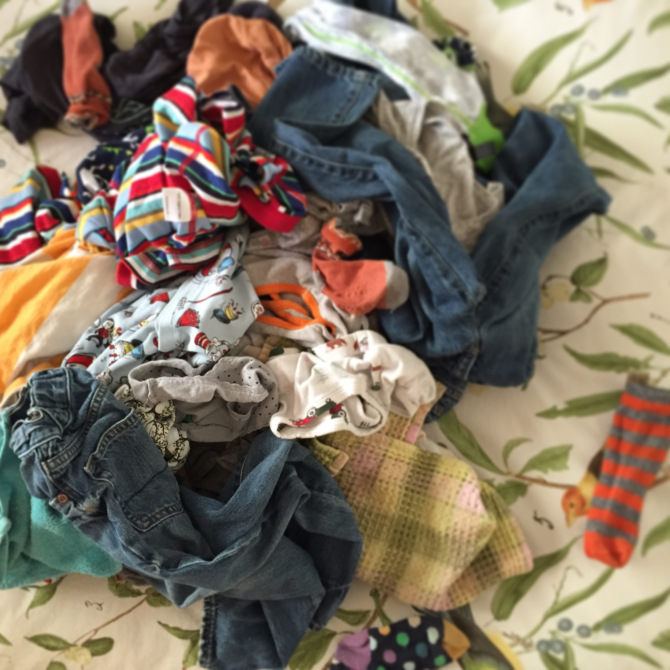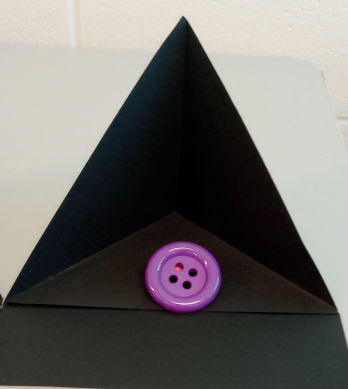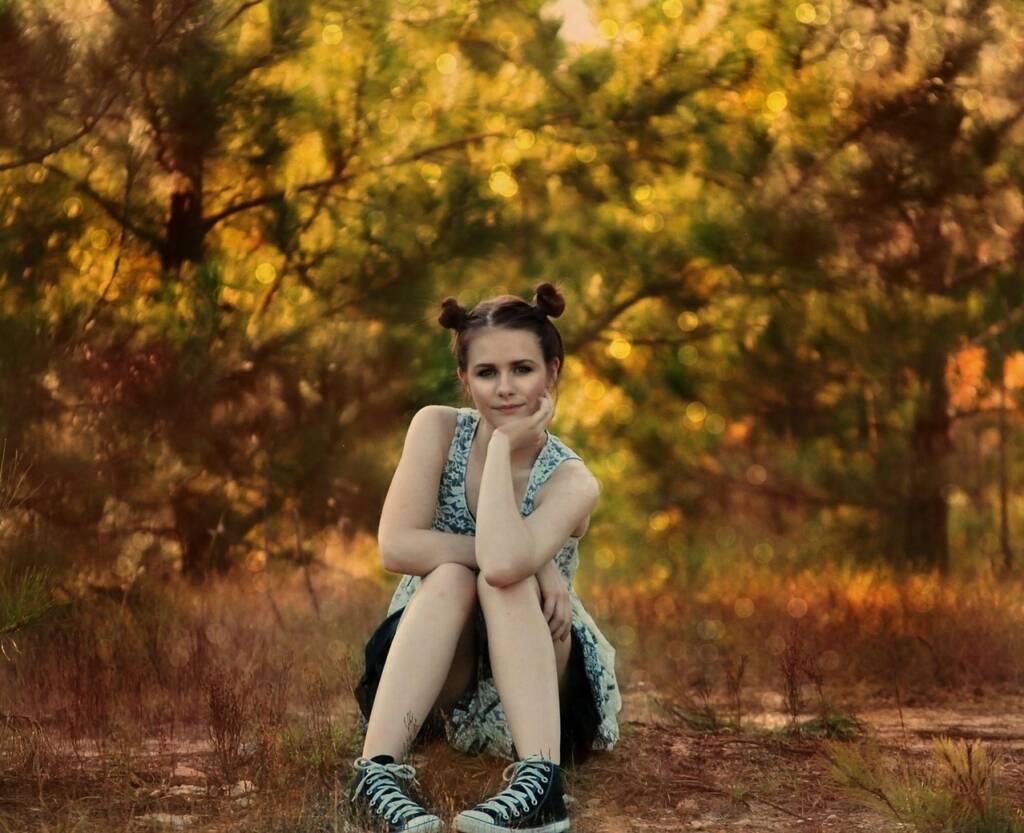For parents of children with special needs, including and especially CVI parents, summer affords a much needed respite from contending with schools and IEP teams. While we do not need to focus on those essential classroom adaptations and accommodations that are necessary at school, we can focus on ways to use vision during the day, every day, around the house in a natural environment.
Laundry happens year round, not just over the summer, and is a good opportunity for using vision. Jasper has been in Phase III CVI (Roman-Lantzy) for a few years but we began practicing laundry once he was old enough to want to “help mommy.” This activity is still good for him in Phase III and is also appropriate for kiddos in late Phase II CVI. Characteristics such as complexity, complexity of array, and color may need to be considered and modified for a child in Phase II. Instead of the heap of laundry pictured here against a patterned background, for example, the pile might be limited to fewer items on top of a solid color sheet. Light may also be important. The clothes themselves are familiar.
Visual Identification
A good place to start the laundry sort is lifting up a sock or other item and asking the child – open ended – “What is this?” The child is being asked to visually identify and label the object, testing whether he recognizes that the object is a sock, doing so without verbal clues. It is important to identify what we are looking for, before beginning a visual search.
Sorting and Categorizing
The next approach to laundry would be, “Can you find all the socks?” By finding all the socks (or shirts or pajamas, etc.), we are practicing sorting and categorizing. Using salient features, we talk about socks. Most likely, each pair of socks is different. We talk about the way all the socks can look different but are still socks. Some socks may be solid white, others striped or bright colors, short, long, thin, thick. All different, but all share the same quality of sockness.
Matching
The next step is to single out a specific clothing item, such as the grey and orange sock off to the side. Can you find one that looks like this? This task requires visually searching the pile for the matching sock. The child can use the salient features of that sock to find a match. Do not be afraid to manipulate the pile beforehand if you need to make an item more visible and easier to find. What you do not want is to create a visual task that is above the ability of the child’s CVI Range score (Roman-Lantzy).
Salient Features and Comparative Language
Laundry is a good household task (daily living skill) to practice visually identifying an object, matching, sorting, categorizing, and using that central vision. And for kids in late Phase II CVI, focusing on and talking about salient features and using comparative language. You cannot talk about salient features enough, they are the red pom pom of Phase III. Salient features are how my son makes sense of, and figures out, what he is looking at.
As the parent – essentially the teacher – there are lessons for me everywhere, and there were lessons in laundry. My son’s limitations are apparent many times over the course of a day and in doing laundry, new ones emerged. The more you work with a child with CVI, the more you learn about his vision. When my son is asked to find a specific item from the laundry, it is apparent that his visual searching is limited to the surface of the pile. Sometimes, he will scan the surface and announce that the item is not there, No sock! Whether due to diminished stereoscopic vision, reduced visual curiosity, or something else, it does not occur to him to look through the pile, to pick up the clothes and search for the item beneath. If it is not right on top, where could it be? And we grab and lift the clothes, eventually uncovering the desired item. This happens often – when anything falls on the floor and seemingly disappears. Instead of easily reaching down and retrieving the item for him, I help him figure out where to look. If the beloved toy is not immediately below or in front of him, he can become frantic over the loss. Standing next to his bed, a favorite Playmobil figure falls to floor. He looks down, the availability of vision already reduced by his elevated state, and does not see the toy. If the toy fell on the floor next to the bed, where could it have gone? Making him think, making him problem solve. I don’t see it on the floor, why don’t we look under the bed? No matter what we lose the question is the same, Where else could we look? Our laundry lesson leads to more learning for both of us.





